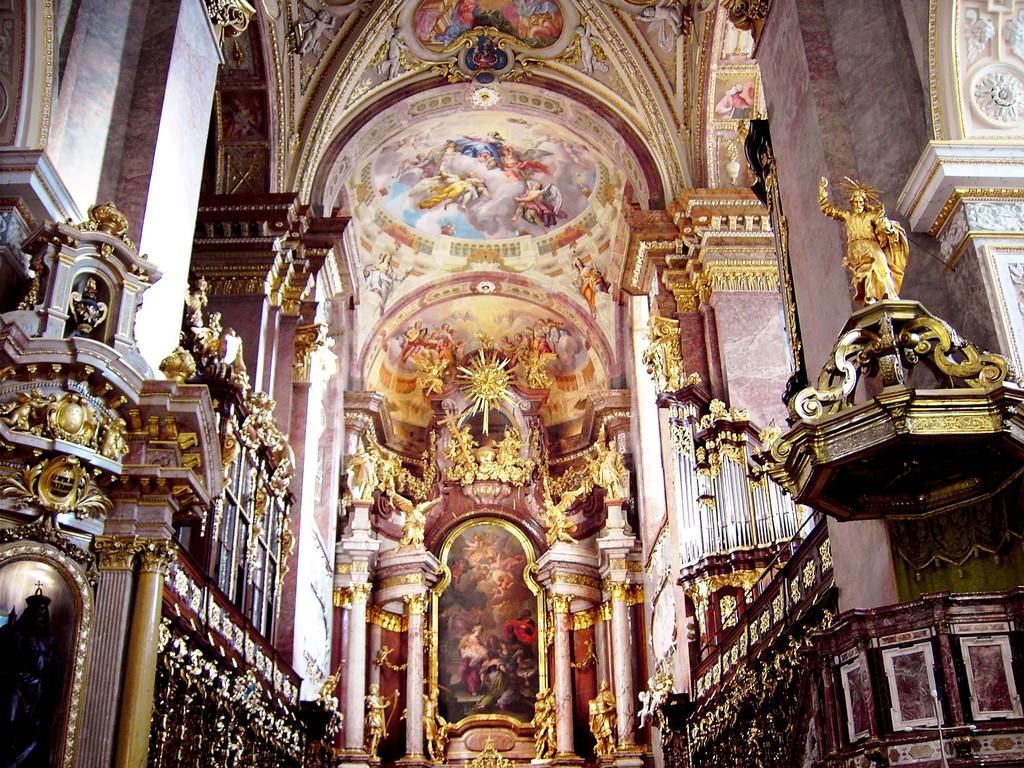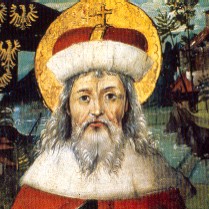Austria > Wein, Wagram & Thermenregion > Stift Klosterneuberg
Sustainable, carbon-neutral
The Klosterneuburg is one of the world’s oldest wine estates, tracing its lineage back to the 12th century, when the monastery was founded by Margrave Leopold III of Babenberg (now Saint Leopold, Patron Saint of Vienna and Austria). In 1133 the Margrave summoned the Order of St. Augustine to Klosterneuburg, where they were to spend centuries developing the monastery into a center of religious life, culture and scholarship. To this day the Augustinian Canons work in this spirit following closely the monastic Rule of Saint Augustine. In 2014 Stift Klosterneuburg Monastery celebrated its 900th anniversary, and continues to serve as Leopold’s final resting place.
Not bad digs for a winery!
The Wines
Sparkling Gruner Veltliner Brut NV
Wiener Gemischter Satz
Weissburgunder
Zierfandler/Rotgipfler "Gumpoldskirschen"
Blaufrankisch "Tattendorf"
Pinot Noir "Steinfeld"
St. Laurent "Tattendorf"
St Laurent "Ausstich Stiftsbreite"
Weissburgunder Trockenbeerenauslese
Welschriesling Eiswein
Gruner Veltliner Eiswein
The Wine Estate
Stift Klosterneuburg owns a total vineyard area of 108 hectares, making it one of the largest and most famous wineries in the country. With nearly ten centuries of experience, Stift Klosterneuburg is dedicated to producing authentic wines of character, wines with a sense of place. Specialization in indigenous grape varieties, conscientious handling of the fruits and gentle vinification serve this goal.
The Vineyards
The legendary vineyards are the heart of the estate. Located in Vienna, and in the villages of Klosterneuburg (Wagram), and Gumpoldskirchen and Tattendorf (both in Thermenregion), they are part of a vital ecological system and home to numerous species of flora and fauna. Sowing a diversity of plants between vine rows attracts an abundance of beneficial animals and insects. The soil is given great attention in the vineyards. Fertilization is with the estate’s own compost, and the living soil is worked entirely by hand. Each vine is given individual attention by placing shoots and pruning leaves to ensure optimal sun exposure and ripening. The estate is currently experimenting with keeping chickens between the rows to loosen the soil, provide light fertilization and reduce weeds.
The Cellar
An extensive cellar from the Baroque period delves deep under the monastery. The vaulted cellar extends over four levels to a depth of 36 meters (118 feet). State-of- the-art technologies are put to work for the production of absolute top-quality wines in this historic venue. Prolonged, temperature-controlled white wine vinification highlights classic varietal aromas and fresh, crisp fruit. Red wines are fermented warmer for optimal extraction of color and tannin. Minimal intervention is practiced to preserve the varietal, vintage, and site character of the wines. Maturation and storage take place in the four story vaulted cellar directly under the monastery.
Carbon Neutral
Conscientious use of the natural resources has always been a central concern for Stift Klosterneuburg. The estate has been certified as the first carbon neutral winery in Austria by the environmental protection pioneer “ClimatePartner.” Sustainable cultivation and production methods employed at the winery result in significant reductions in emissions. The deep double-walled cellar of Stift Klosterneuburg does not require any additional air-conditioning for wine storage. The warmth created during fermentation and other processes is recycled, and the estate’s own biomass power plant satisfies all heating needs and delivers surplus energy into the network. Relying on local energy providers whenever possible helps reduce transportation needs. Stift Klosterneuburg is in the process of converting all of its tractors to biofuel. Winery manager Wolfgang Hamm keeps a close on our production methods and says “Environmental protection is a permanent process in our winery.”
Saint Leopold, founder of klosterneuberg
Leopold, Margrave of Austria (d.1136) is remembered as the founder of several monasteries and a key figure in the development and growth of cities such as Krems, Klosterneuburg and Vienna. As a result of his efforts to establish monasteries in previously uninhabited regions in Austria, he was canonised by Pope Innocent VII in 1485, and 15 November was established as his feast day in the German liturgical calendar. In 1663, he was declared patron saint of Austria under the rule of his namesake Emperor Leopold I. He is buried in the abbey he established in Klosterneuburg. His skull is kept in an embroidered reliquary, which leaves his forehead exposed.
Saint Leopold, Margrave of Austria, Patron Saint of the Nation, and founder of the Klosterneuberg
Since 1813 his feast day has been observed in the abbey with the ceremony known as Fasselrutschen ('the Slide of the Great Cask') which takes place in the wine cellar. Participants climb a narrow staircase that leads to the top of an enormous cask which was made in 1704 and holds 56,000 litres of wine. They then slide down its smooth side to a soft mat at its base. According to tradition, the faster the trip down, the better luck the person will have in the coming year.



